How to use dolomite flour in gardening: rules for applying in spring and autumn
So, it is obvious that you are interested in such a useful organic fertilizer and a very effective soil deoxidizer, like dolomite flour (also called "dolomite").
What is dolomite flour, what is it used for, when and how is it introduced into the soil, this material will be devoted to the answers to these and other questions of using dolomite in the garden and vegetable garden.
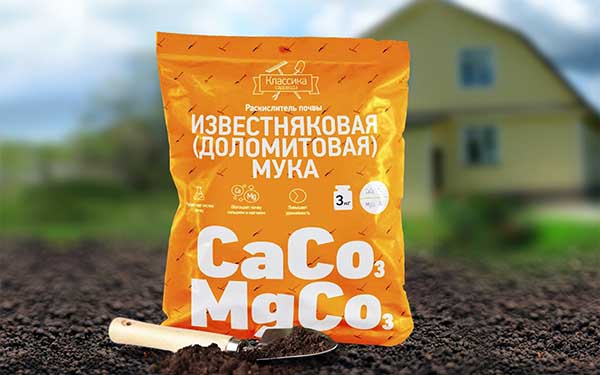
Content
Why use dolomite flour in your garden
Dolomite flour is obtained by grinding carbonate rock consisting of the dolomite mineral. In other words, it is an organic substance that is widely used in organic farming.
Interesting! Dolomite (limestone) flour is usually a white, gray or creamy powder. However, you can also find orange dolomite, this shade means a high content of magnesium.
In general, if the content of magnesium carbonate (MgCO2) exceeds 15-16%, then it is then that the flour is called dolomite, and not limestone.
Dolomite flour in horticulture is used for:
- liming of acidic soils (decrease = normalization them acidity);
By the way! The site contains separate detailed articles on how to determine the acidity of the soil, and change (decrease or increase acidity).
- enrichment with such useful microelements, as calcium (accelerates root growth) and magnesium (participates in the process of photosynthesis, i.e. is part of chlorophyll, and is also the fourth most important nutrient after nitrogen, phosphorus and potassium);
Total share calcium and magnesium carbonates (CaCO3 and MgCO3) not less 80-85%.
By the way! The lack of magnesium is especially pronounced for light sandy soils.
- improving the structure and increasing soil fertility;
- enhancing the activity of beneficial microorganisms and small-bristle (annelid) worms;
- increasing the efficiency of applied fertilizers (both organic and mineral), in other words, increases the availability of various nutrients;
Especially it concerns phosphate fertilizersas well as organic nitrogen, molybdenum and sulfur.
- reducing the number of weeds on the site;
By the way! About how else you can fight weeds in the country, detailed in this material.
- increasing the resistance of crops to various diseases (suppresses soil infections - cabbage keel and scab, discourages top rot of tomato fruit);
- pest control (causes abrasive destruction of chitinous integuments in insects, for example, it destroys the chitinous shell of wireworm - the larvae of the click beetle).
To fight ticks, various butterflies, beetles and flies, you can also powder plants dolomite flour during the season.
Thus, the introduction of dolomite flour helps to increase the productivity of most crops (except for plants that like acidic soils).
Video: how and why to add dolomite flour to the soil
What crops do not like acidic soil
Dolomite flour is primarily used to deoxidize the soil, normalize its acidity. The fact is that the most favorable acidity for most plants is neutral (6-7 pH). At the same time, many vegetable, fruit and berry crops are able to grow well on slightly acidic soils (up to pH 5.2).
Conventionally, according to the requirements for soil acidity, vegetable, berry and fruit crops can be divided into 3 large groups (+4 small):
- They do not tolerate acidic soil at all (pH 6-7.5 required) - beets, cabbage, cucumbers, onions, garlic, celery, parsnips, corn, asparagus, peas, beans, spinach, currants, plums, cherries, peaches, apricots (stone fruits ).
- Plants that need slightly acidic soil and close to neutral reaction (5.2-6 pH) - lettuce, leeks, rutabagas, apple trees, pears (pome fruits).
- Plants that can grow in slightly acidic soil, but it is advisable to grow them in neutral (5.2-7 pH) - potatoes, carrots, parsley, turnips, radishes, radishes, pumpkins, zucchini, tomatoes, eggplants, peppers, gooseberries, raspberries.
- Plants that can grow even with high acidity (4.5-7 pH) are sorrel.
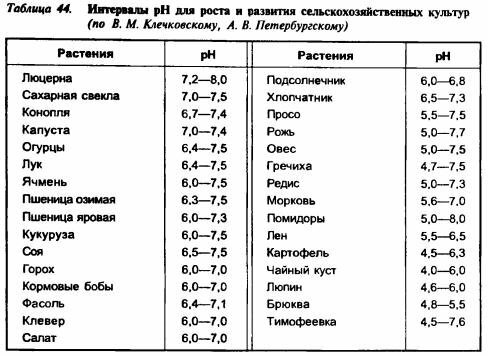
What plants love acidic soil
Dolomite flour cannot be added to these crops (they, on the contrary, require soil acidifiers, not deoxidizers):
- Heather families - heathers, blueberries, blueberries, lingonberries, cranberries, azaleas and rhododendrons, as well as Erica.
- Hydrangeas.
- Some conifers.
When to apply dolomite flour - in spring or autumn
Dolomite flour it is better to bring in in the fall (for digging - preparation of the garden) after harvesting, but you can do this in the spring (efficiency will be reduced).
Why is it better in autumn?
If you add dolomite flour in the spring, then it will start working fully only in the fall. If you bring it in in the fall, then it will work in full force in the spring, which will have a positive effect on the harvest.
How often do you deposit?
The recommended frequency of adding dolomite flour to acidic soil is Once every 5 years.
Using dolomite flour for soil deoxidation (acidity reduction)
The rates of dolomite flour application depend on the acidity and type (texture) of the soil.
If the soil clayey (peaty-boggy) and loamy (loamy):
- acidic (pH less than 4.5) - 500-600 grams per square meter beds;
- medium acidic (pH 4.5-5.2) - 450-500 grams per square meter;
- slightly acidic (pH 5.2-5.5) - 350-450 grams per sq.m.
Note! On light (sandy) soils, the application rate should be 1.5 times less than on heavy (clay) soils.
If the soil sandy or sandy loam (sandy loam):
- acidic (pH less than 4.5) - 335-400 grams per sq.m. beds;
- medium acidic (pH 4.5-5.2) - 300-335 grams per square meter;
- slightly acidic (pH 5.2-5.5) - 235-300 grams per sq.m.
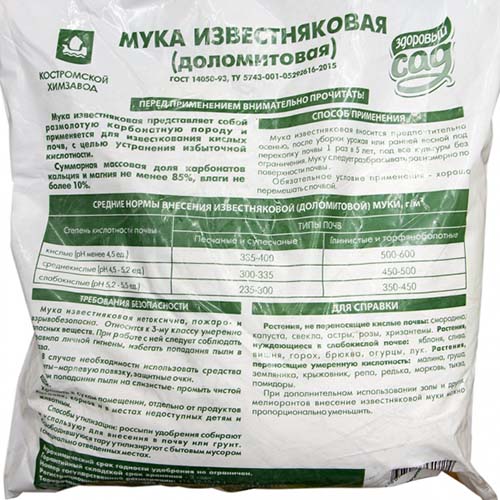
How to determine the type of soil (texture)
Of course, the easiest way to determine the type of soil is by its color, however, this is not the best way, because sandy loam soil (sandy loam) is very easy to confuse with loam, which in turn can be confused with clay.
It is much more correct to determine the mechanical composition of the soil by the degree of its cohesion. To do this, you need to take a handful of earth and squeeze it in your hand.
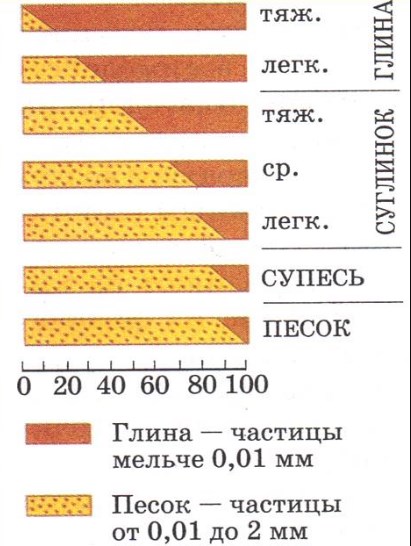
- It crumbles without forming either a "ball" or "lace" ("sausages") - it is sand.
- You can form a ball, but you cannot roll it into a lace - sandy loam (sandy loam soil).
- It is possible to form a lace, but almost cannot be rolled into a ring, because it disintegrates easily - light loam.
- You can roll into a ring, but cracks and breaks form on it - medium loam.
- It curls up into a ring, on which only small cracks are formed - heavy loam.
- Easy to roll into a ring without cracks - clay (also light and heavy).
How to determine the acidity of the soil
Advice! The site already has a separate material about how to measure soil acidity, which lists and describes all methods.
- You can use special test strips ("Litmus test").
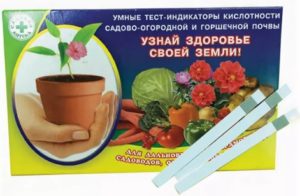
- There are special acidity measuring instruments.
You can buy them (test strips and the device) both in garden centers and order in online stores.
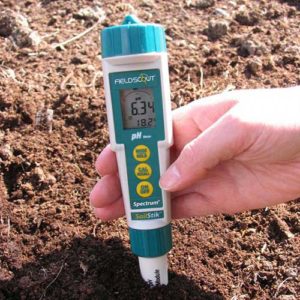
- Of course, you can take the soil sample to a special laboratory.
- And the simplest, but not the most revealing way, but completely free, is to see what weeds grow on your site... If the soil is acidic, then you should grow horsetail, wood lice, sedge, plantain.
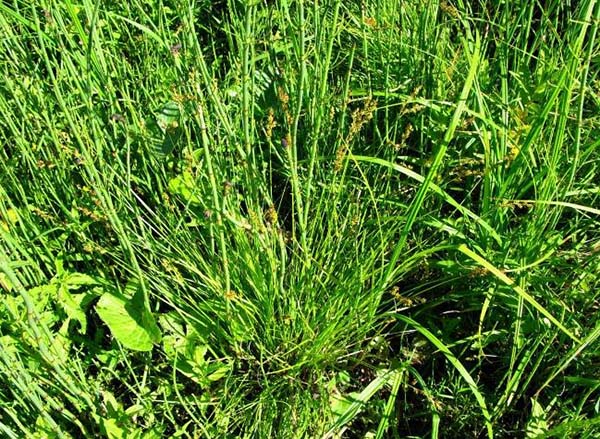
Important! Before adding dolomite flour, you must first find out the mechanical composition (type of soil) and acidity of your soil, and then act strictly according to instructions.
How to properly add dolomite flour
So, as we found out, it is better to apply dolomite flour in the fall, but it is possible in early spring (it will not work immediately). First you need scatter flour evenly over the soiland then be sure mix with soil, i.e. dig up or shallow loosening (embedded in the ground to a depth of 7-15 cm).
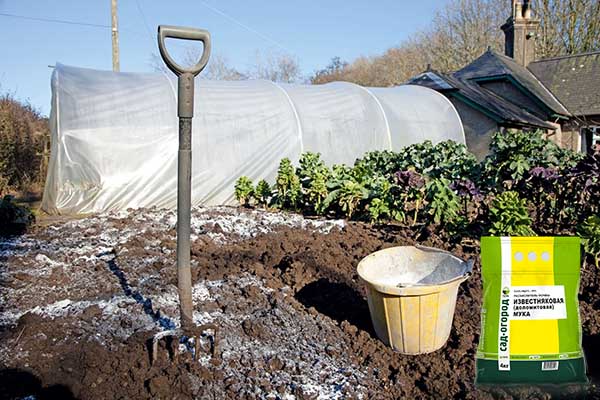
Sure you may prepare solution dolomite flour and spill along the grooves (or along the root), however, lime materials do not dissolve very well, so in any case you will need to loosen the surface.
What dolomite flour should not be added with
Dolomite flour should not be applied together with mineral fertilizers such as ammonium nitrate and urea (both nitrogen), as well as with superphosphate (phosphoric), from organic - with fresh manure.
What to do?
Need to keep the interval between the use of these fertilizers, preferably in a year or six months, or at least in a couple of months.
Your soil is acidic and you still haven't bought dolomite flour? Not in order, it's time to go to the garden store. After all, now you know how much benefit your plants will bring using dolomite flour in the garden and vegetable garden.
Video: dolomite flour in agriculture

